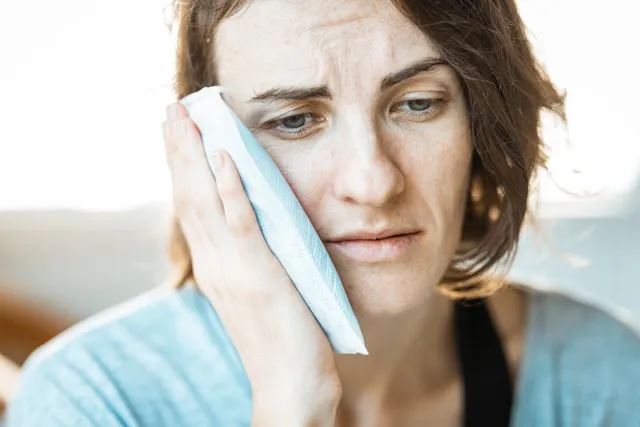Today most people experience muscle strain/pain and dysfunction, which is common since it can also be easily treated. Myotherapy is a physical therapy that effectively treats and protects soft tissue pain and constrained mobility in joints using manual, hands-on massage. Dysfunctional motion patterns of the muscles, joints, soft tissues, and surrounding myofascial may result in muscular and soft tissue pain. Myotherapy is a form of non-invasive therapy for pain in the muscles caused by injury or soft tissue issues. Your muscles will feel amazing after a massage, and you'll be happier, more energized, and more productive. In this article, we will explore what is Myotherapy, its benefits, and who may benefit from this therapy. Keep reading to learn more.
History of Myotherapy
Myotherapy was first developed in 1976 by Bonnie Prudden, who based the technique on prior methods created by Dr. Janet Travell - the personal physician of President John F. Kennedy - and Dr. Hans Kraus. This is according to the International Myotherapy Association.
What is Myotherapy?
Myotherapy, commonly referred to as sports or medical massage, is a sophisticated remedial massage. To treat muscular and myofascial pain, a therapist performs trigger point release and several additional treatments during Myotherapy. Due to overuse or injury, your muscles develop sensitive regions of tight muscle fibers called trigger points. Myotherapists use their hands, fingers, elbows, or knuckles to provide specific massage methods to release tension in these regions.
6 Benefits of Myotherapy
Myotherapy is a form of physical therapy that focuses on treating musculoskeletal pain and dysfunction.
Some of the other health benefits of Myotherapy may include:
1. Reduce pain
Several people deal with physical pain daily. Sometimes, the pain might last for a long time; other times, it is only temporary. Everyone experiences pain differently. Past experiences and prior pain management techniques frequently influence how you react to pain.
One of the advantages of Myotherapy is that it addresses various mechanical causes of pain, including muscle trigger points, improper movement patterns that increase the strain and pressure on your joints, and insufficient mobility that results in compensatory movement patterns.
Myotherapy aids in the restoration of healthy blood flow to tissues, which promotes wound healing and the dissolution of adhesions. Instead of using prescription drugs to cover up the underlying problem, Myotherapy can effectively reduce pain and tension headaches.
2. Relieve stress
Stress usually causes people to feel tight in their neck, head, and shoulders, which is where Myotherapy may be beneficial. By relaxing and releasing the muscles in the neck, head, and shoulders, Myotherapy helps to reduce discomfort.
These techniques improve blood circulation, reduce muscle tension, lower stress hormones, and stimulate the lymphatic system, all of which help lower anxiety and depression, improve skin tone, and increase mental alertness.
3. Corrects the posture
The first step in identifying any imbalances in the body that could be causing dysfunction and pain is to look at alignment and postural issues. Myotherapy massage treatments are customized to the client's needs to address problematic regions and lessen discomfort.
The most frequently afflicted areas are the neck and shoulders, typical in those who spend a lot of time sitting or working at a computer. Myotherapy can help with these problems and improve posture by controlling the body and strengthening muscles. Try to relieve pain with shoulder and neck exercises.
4. Improves sleep -
Many individuals need help falling asleep or getting up frequently at night, which makes for poor sleep. Giving short-term massages can enhance sleep quality.
The various pressure points, reflex points, and acupressure points are said to help sleep. After receiving massage treatment, many people claim to sleep better by using Myotherapy. You can also take natural supplements for better sleep.
5. Prevents Injury -
Injuries can be avoided by ensuring your entire body can move freely and well. Moving freely means moving your joints freely and across their complete range of motion. Myotherapy has the effect of improving your body's mobility and efficiency of movement.
With the use of therapeutic massage, dry needling, and cupping, myotherapy treatments help to increase tissue and joint mobility. Subsequently, enabling unrestricted movement throughout your body to avoid painful injury episodes.
6. Enhance immunity -
A single massage treatment session has demonstrated demonstrable physiologic impacts on the immune system. Stress hormones are reduced during massage, improving your immune system's effectiveness.
Additionally, improved lymphatic drainage and circulation can enhance the body's healing ability, ensuring you are healthy and strong.
What can all Myotherapy treat?
Numerous musculoskeletal system disorders can be effectively treated with Myotherapy. These may consist of the following:
- Injuries
- Headaches
- Joint pain.
- Chronic overuse syndrome
- Pregnancy-related problems
- Neck and back ache
- Difficulties with a range of motion
- Jaw dysfunction and discomfort
- Muscle tingling and prickling feeling
What is the therapy does Myotherapy include?
Depending on the issues and presentation of our patients, a myotherapist has a wide variety of therapeutic "modalities" at their disposal. These consist of the following:
- Mobilization of soft tissues.
- Mobilization of deep tissue.
- Myofascial Release.
- mobilisation in concert.
- Cupping Therapy
- Electro-needling as well as dry needling.
- TENS therapy.
- Cold and hot therapy.
- Techniques for managing pain.
What are the types of Myotherapy?
Myotherapists have a broad variety of therapeutic procedures at their disposal. They will take note of your medical background and employ evaluation procedures to decide which is ideal for you. These will make developing a treatment plan tailored to your needs easier.
Remedial Massage
The use of remedial treatments and occasionally sports massage techniques. They manipulate soft tissues and muscle fibers to alleviate acute and persistent pain.
Passive stretching
Applying an external force moves the muscles in various directions during passive stretching. It's a fantastic method for increasing the range of motion and reducing joint discomfort. Remember that this is not the same as dynamic and active stretching. These are more beneficial for injury prevention during warm-up exercises.
Also Read: Exercises To Reduce Knee Pain
Myofascial Release Technique
A method of treating muscles and soft tissues that relieves tension and uncomfortable fascia. It works wonders for loosening up bothersome muscular knots. This particular form of muscle medication combines the following:
- By giving a gentle massage.
- Using acupuncture needles for dry needling.
- (Ice packs may be used.) cold treatment.
- Compression due to ischemia.
Cupping
Myofascial Cupping involves applying suction to the painful region with specialized cups. This facilitates better blood flow and muscular function recovery.
Dry needling
Myofascial dry needling uses a sterile solid needle to address dysfunction in the human body's myofascial system. Myofascial trigger points linked to dysfunction and pain syndromes are removed with myofascial dry needling.
TENS therapy
The treatment is formally known as transcutaneous electrical nerve stimulation (TENS). To alleviate musculoskeletal discomfort, this gadget conducts electrical currents across the body.
Muscle Energy Technique (MET)
The Muscle Energy Technique (MET) stretches myofascial tissue by activating neurological reflexes. It enhances blood and lymph flow, eases discomfort, and mobilizes joints.
What Are The Difference Between Myotherapy and Physical Therapy?
| Aspects | Myotherapy | Physical Therapy |
| Focus | Focuses on relieving muscle pain and tension. | Focuses on rehabilitation and mobility. |
| Treatment Method | Primarily uses massage and trigger point therapy. | Involves a range of exercises, manual therapy, and modalities. |
| Training | Typically involves specialized training in myofascial release techniques. | Requires a degree in physical therapy and licensure. |
| Condition Treated | Target muscle-related issues such as muscle spasms, strains, and injuries. | Addresses wide range of conditions including neurological, orthopedic, and cardiopulmonary issues. |
| Goal | Aims to alleviate muscle pain and improve range of motion. | Aims to restore function, reduce pain, and enhance mobility. |
How to Find a Myotherapy Provider?
To find a myotherapy provider, you can search online directories, ask for referrals from healthcare professionals, or look for certified myotherapists in your area.
Is Myotherapy Covered By Health Insurance?
Yes, some private health insurers cover myotherapy as part of their Extras packages. It's best to check with your insurance provider to see if they cover myotherapy and what the specific requirements are for coverage
Conclusion -
Myotherapy is a sort of manual therapy that aids in the treatment and management of pain brought on by injuries or issues with the muscles or soft tissues. Trigger point myotherapy is among the most prevalent ailments that a myotherapist treats. These regions of constricted muscle fibers can be brought on by physical or emotional stress, illness, or injury.
Removing these trigger points can aid in reducing severe and ongoing pain. Myotherapy is still a very new form of therapy. Thus, there is little data to back it up. However, despite being a specialized remedial massage, it is believed to have similar advantages.
Frequently Asked Questions
What does Myotherapy do?
Myotherapy aims to alleviate muscle pain and tension, improve muscle function, and reduce discomfort.
Is Myotherapy better than massage?
Myotherapy and massage serve different purposes; myotherapy focuses on specific muscle issues while massage typically offers relaxation and stress relief.
What is the difference between Myotherapy and Physiotherapy?
Myotherapy is a specialized form of physical therapy that targets muscle dysfunction, while physiotherapy addresses a broader range of physical conditions and rehabilitation.
What is the difference between Myotherapy and Chiropractic?
Myotherapy primarily focuses on muscle-related issues, whereas chiropractic care centers on spinal alignment and nervous system function.
What is the difference between Myotherapy and Remedial massage?
Myotherapy Vs Remedial Massage: Myotherapy involves a more targeted approach to treating musculoskeletal issues compared to the broader focus of remedial massage.

Reviewed by







